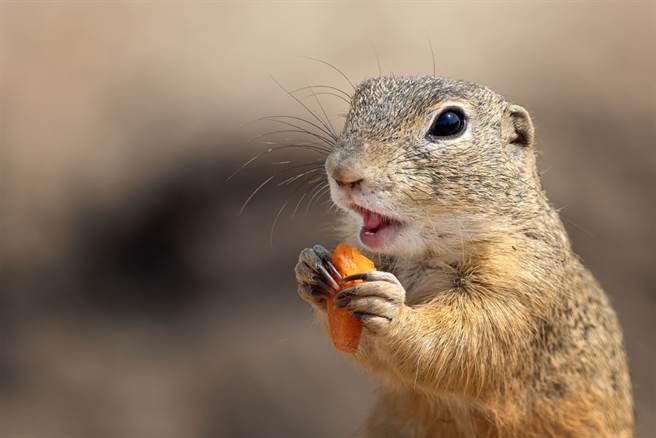Groundhogs, also known as woodchucks (Marmota monax), are burrowing rodents found across North America. As members of the squirrel family, these animals are best known for their association with Groundhog Day, but their dietary habits are equally fascinating. So, what do groundhogs eat, and how do their eating habits impact the environment? In this article, we will explore the diet of groundhogs, their foraging behaviors, and the role their eating habits play in their ecosystems.

Groundhogs are medium-sized rodents that belong to the marmot family. They are primarily herbivorous, meaning their diet consists mostly of plant material.
Strong Incisors: Groundhogs have sharp teeth that grow continuously, helping them gnaw through tough plant material.
Large Stomach: Their digestive system is designed to handle a diet rich in fiber, such as grasses and vegetation.
Understanding what do groundhogs eat provides insight into their behavior, habitat preferences, and their role in both natural and human-modified environments.
Groundhogs are primarily herbivores, and their diet includes:
Grasses and Clovers: These make up a large portion of their diet, especially during the warmer months.
Wildflowers: Groundhogs enjoy a variety of flowers found in their natural habitats.
Leaves and Bark: During times when green vegetation is scarce, groundhogs will eat tree bark and leaves.
Groundhogs adjust their diet based on the availability of food:
Spring and Summer: Fresh greens, wildflowers, and clover dominate their diet.
Fall: Groundhogs consume more calorie-rich foods, like fruits and nuts, to prepare for hibernation.
Winter: Groundhogs hibernate during winter, relying on stored body fat rather than actively eating.
While rare, some groundhogs may consume insects like grubs or worms, particularly when vegetation is scarce.
When groundhogs venture into gardens, they enjoy:
Vegetables:
Carrots, lettuce, beans, and peas are among their favorites.
Fruits:
They are particularly fond of berries, apples, and melons.
Groundhogs can also feed on crops like corn and soybeans, causing frustration for farmers. Their preference for tender shoots and roots can lead to significant damage in agricultural areas.
In suburban settings, groundhogs are known to graze on:
Lawn grasses.
Ornamental flowers.
Shrubs.
Groundhogs are diurnal, meaning they are most active during the day, especially in the early morning and late afternoon:
They venture out of their burrows to forage within a short distance, typically 50–150 feet from their dens.
Groundhogs often remain close to their burrows to quickly escape predators while foraging.
While they do not hoard food, groundhogs prepare for hibernation by eating large quantities to build fat reserves.
Groundhogs require a diet rich in carbohydrates, fiber, and water:
Carbohydrates: Found in fruits and vegetables, provide energy for daily activities.
Fiber: Essential for their digestive system, obtained from grasses and leaves.
Water: Groundhogs get most of their water intake from the moisture content in plants.
The foods groundhogs eat help them adapt to seasonal changes:
Spring: Nutrient-rich plants help them recover from hibernation.
Fall: High-calorie foods support the fat accumulation necessary for winter survival.
By eating a wide variety of vegetation, groundhogs:
Aid in seed dispersal.
Influence plant growth patterns.
Serve as prey for predators, contributing to the ecosystem's balance.
Soil Aeration: Groundhog burrowing improves soil quality and allows plant roots to grow better.
Plant Control: Their grazing helps manage the growth of certain plant species.
Groundhogs’ diet can sometimes conflict with human interests:
Garden Damage: They often raid vegetable gardens and flower beds.
Crop Loss: Farmers may experience reduced yields due to groundhog feeding.
Understanding what do groundhogs eat helps develop strategies to minimize conflicts:
Use fencing to protect gardens.
Plant groundhog-resistant vegetation.
Provide alternative food sources in non-sensitive areas.
Constant Grazers: Groundhogs spend several hours each day eating to meet their nutritional needs.
Food Preferences Vary: Their diet changes depending on their location and available vegetation.
Efficient Digesters: Groundhogs have a specialized digestive system to extract maximum nutrients from plant material.
Fruit Lovers: They enjoy fruits like apples and melons as occasional treats.
Adaptable Diet: Groundhogs can survive on tree bark and leaves when other food sources are scarce.
Groundhogs primarily eat grasses, clovers, and wildflowers. During the growing season, they may also consume vegetables and fruits.
Groundhogs are primarily herbivores but may occasionally eat insects like grubs or worms.
Groundhogs may eat fruits and vegetables from gardens but should not be fed processed human food, as it can harm their health.
Groundhogs can consume up to a pound of food daily during the active months to prepare for hibernation.
Groundhogs primarily get water from the moisture in the plants they eat but may also drink from nearby water sources if available.
The question what do groundhogs eat reveals much about these fascinating creatures and their role in the environment. From their preference for tender greens to their seasonal diet adaptations, groundhogs demonstrate remarkable versatility in their eating habits. While they may pose challenges for gardeners and farmers, understanding their dietary needs allows for better coexistence strategies. Groundhogs not only play a critical role in their ecosystems but also provide a unique glimpse into the interconnectedness of nature. By respecting their role and managing their impact, we can appreciate the important contributions of these burrowing herbivores.
animal tags: Groundhogs
We created this article in conjunction with AI technology, then made sure it was fact-checked and edited by a Animals Top editor.